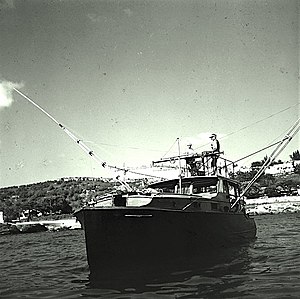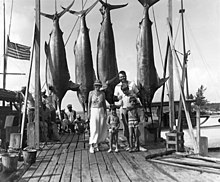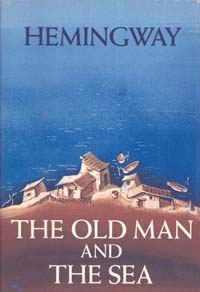
The Old Man and the Sea is a 1952 novella written by the American author Ernest Hemingway. Written between December 1950 and February 1951, it was the last major fictional work Hemingway published during his lifetime. It tells the story of Santiago, an aging fisherman, and his long struggle to catch a giant marlin. The novella was highly anticipated and was released to record sales; the initial critical reception was equally positive, but attitudes have varied significantly since then.

G.L Fuentes was a fisherman and the first mate of the Pilar, the boat belonging to the American writer Ernest Hemingway.
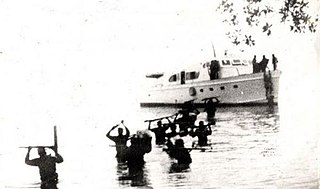
Granma is a yacht that was used to transport 82 fighters of the Cuban Revolution from Mexico to Cuba in November 1956 to overthrow the regime of Fulgencio Batista. The 60-foot diesel-powered vessel was built in 1943 by Wheeler Shipbuilding of Brooklyn, New York, as a light armored target practice boat, US Navy C-1994, and modified postwar to accommodate 12 people. "Granma", in English, is an affectionate term for a grandmother; the yacht is said to have been named for the previous owner's grandmother.

Big-game fishing, also known as offshore sportfishing, offshore gamefishing or blue-water fishing, is a form of recreational fishing targeting large game fish, usually on a large body of water such as a sea or ocean.

Bimini is the westernmost district of the Bahamas and comprises a chain of islands located about 80 kilometres (50 mi) due east of Miami. Bimini is the closest point in the Bahamas to the mainland United States and approximately 210 km (130 mi) west-northwest of Nassau. The population is 2,417 as of the 2022 census.

The Atlantic blue marlin is a species of marlin endemic to the Atlantic Ocean. It is closely related to, and usually considered conspecific with, the Indo-Pacific blue marlin, then simply called blue marlin. Some authorities consider both species distinct.
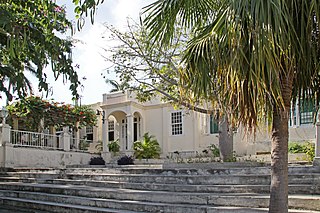
Finca Vigía is a house in San Francisco de Paula Ward in Havana, Cuba which was once the residence of Ernest Hemingway. Like Hemingway's Key West home, it is now a museum. The building was constructed in 1886.

Baron Bror Fredrik von Blixen-Finecke was a Swedish nobleman, writer, and African professional hunter and guide on big-game hunts. He was married to Karen Blixen from 1914 to 1925.
Norberto Fuentes is a writer and journalist.
Merritt Boat & Engine Works, sometimes abbreviated as Merritt's, is a yacht builder and boat yard headquartered in Pompano Beach, Florida. Together with Rybovich, Merritt is respected as one of the most historically significant Florida custom sport fishing boat builders.
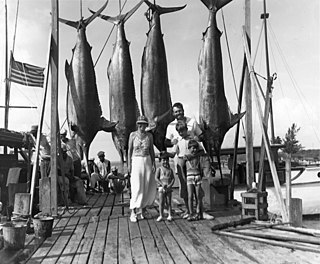
Marlin fishing or billfishing is offshore saltwater game fishing targeting several species of fast-swimming pelagic predatory fish with elongated rostrum collectively known as billfish, which include those from the families Istiophoridae and Xiphiidae (swordfish). It is considered by some fishermen to be a pinnacle of big-game fishing, due to the size, speed and power of the billfish and their relative elusiveness.

Islands in the Stream (1970) is the first of the posthumously published novels of Ernest Hemingway. The book was originally intended to revive Hemingway's reputation after the negative reviews of Across the River and Into the Trees. He began writing it in 1950 and advanced greatly through 1951. The work, rough but seemingly finished, was found by Mary Hemingway among 332 works Hemingway left behind at his death. Islands in the Stream was meant to encompass three stories to illustrate different stages in the life of its main character, Thomas Hudson. The three different parts of the novel were originally to be titled "The Sea When Young", "The Sea When Absent" and "The Sea in Being". These titles were changed, however, into what are now its three acts: "Bimini", "Cuba", and "At Sea".
Land-based game fishing is a form of big-game sport fishing in which anglers attempt to catch oceanic game fish from shore rather than from ocean-going boats. The locations for such activities are generally rock platforms, though wharfs, jetties and beaches are also common. Some species such as sharks can be targeted in shallow littoral water, however most other species prefer deeper pelagic water, and this limits the areas where these types can be fished from the shore. Tackle used is usually comparable to that used on boats, but some differences are necessary, such as changes in rod length. Different tackle is used according to location and species targeted.

The Hotel Ambos Mundos is a hotel in Havana, Cuba. Built with a square form with five floors, it has an eclectic set of characteristics of 20th-century style architecture. It was built in 1924 on a site that previously had been occupied by an old family house on the corner of Calle Obispo and Mercaderes in Old Havana. It is a frequent tourist destination because it was home to the popular writer Ernest Hemingway for seven years in the 1930s.
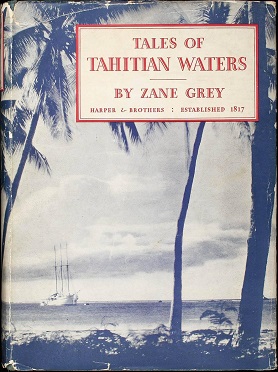
Tales of Tahitian Waters is a 1931 book by Zane Grey. The book collects several fishing stories and was first published by Harper Brothers and was later republished in 1990 by Derrydale Press. In the book Grey describes catching a marlin weighing 1,040 pounds and the catch was credited as being the first 1,000 pound fish ever caught.
The Pemba Channel is the strait separating the eastern coast of mainland Africa on the coast of central and northern Tanga Region from Pemba Island to the south of the Indian Ocean. The channel is entirely in Tanzanian territorial waters

Selwyn Kip Farrington, Jr. was an American writer and sport fisherman. As a journalist he did much to popularize big game fishing from the 1930s onward, and set a number of records himself. In addition to fishing, he was a noted rail enthusiast. Farrington wrote and published twenty-four books covering such diverse topics as fishing, railroading, and amateur hockey.
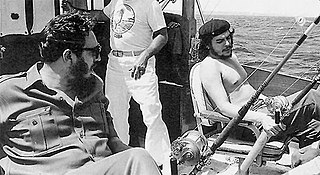
The Ernest Hemingway International Billfishing Tournament is an annual fishing tournament held in Cuba. The tournament was established by American author Ernest Hemingway in 1950. Regularly held in May or June, it has been described as the "highlight of Cuba's fishing year" and regularly attracts anglers from as many as 30 countries.
Van Campen Heilner (1899-1970) was an American sportsman, and author of works on hunting and fishing. Heilner was born wealthy, his family's wealth, from coal mining, financed his hunting and fishing expeditions around the world.

Henry "Mike" Strater (1896–1987) was an American painter and illustrator. He was a friend of Ernest Hemingway and other figures of the Lost Generation. He was best known for his portraiture, figurative, and landscape drawings and paintings. Strater founded the Ogunquit Museum of American Art in Ogunquit, Maine in either 1952 or 1953.
